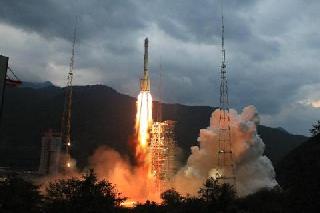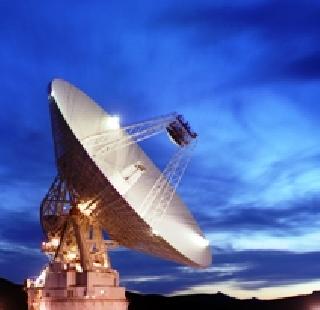
The Chang'e-2 spacecraft was launched on Friday. A Xinuha photo
BEIJING (PTI): China's second unmanned lunar probe, Chang'e-2, was maneuvered to correct its trajectory on the earth-moon transfer orbit on Saturday, a day after it was launched as part of an ambitious space programme to put a man on the moon later this decade.
Scientists successfully activated the altitude control engines on Chang'e-2 and trimmed the satellite for the first time on its journey, state-run Xinhua news agency said.
"During Chang'e-2's 380,000-km journey to the moon, we will conduct more orbit corrections if necessary to ensure that it enters a lunar orbit," said Ma Yongping, vice director of the flight control centre in the capital.
China, which seeks to put a man on the moon, launched its second unmanned lunar probe Friday to test soft-landing technologies for a mission slated for 2013, the same year when India plans to launch Chandrayaan-II.
Chang'e-2 blasted off on a Long-March-3C carrier rocket from the Xichang Satellite Launch Centre in southwest China's Sichuan province.
It is China's first unmanned spacecraft to be boosted from the launch site directly to the earth-moon transfer orbit, greatly reducing the journey time from that of its predecessor Chang'e-1.
Chang'e-1 took about 13 days to travel to a lunar orbit after orbiting the earth in a geosynchronous orbit and then transferring to the earth-moon transfer orbit.
Chang'e-2 is expected to travel for about 112 hours, or almost five days, to arrive in a lunar orbit.
To acquire more detailed moon data, the spacecraft will enter a lower lunar orbit about 100-km above the surface, compared with the 200-km altitude of Chang'e-1, according to the control centre.
The satellite will eventually be maneuvered into an orbit just 15 kilometer above the moon.
At that point, Chang'e-2 will take pictures of moon's Bay of Rainbows area, the proposed landing ground for Chang'e-3, with a resolution of 1.5 metres.
The resolution on Chang'e-1's camera was 120 metres, Wu Weiren, chief designer of China's lunar orbiter project said.
Under a three-phase moon exploration roadmap, China will land Chang'e-3 on the moon in 2013 while its first manned moon mission is expected in 2025.
In comparision to India, China had a headstart by flying a man into space in 2003, thus becoming the third nation only after the US and the then Soviet Union.
India, whose Chandrayaan-1 had discovered water on the moon, plans to launch its Chandrayaan-II mission in 2012-13.
 Previous Article
Previous Article Next Article
Next Article













The Indian Air Force, in its flight trials evaluation report submitted before the Defence Ministry l..
view articleAn insight into the Medium Multi-Role Combat Aircraft competition...
view articleSky enthusiasts can now spot the International Space Station (ISS) commanded by Indian-American astr..
view article